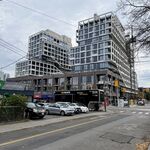mpd618
Active Member
Is HOT lanes are better alternative to congestion charge?
HOT lanes are worse, because they set up a situation that can easily lead to their own demise. People in the non-HOT lanes will fight tooth and nail both to prevent any more lanes being used more efficiently, and to claw back the HOT lane. Same thing with bus lanes. With a congestion charge, the only people using the road have a positive, congestion- and envy-free experience.




